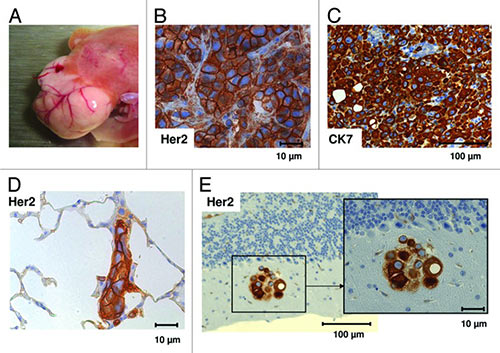Species
Mouse
Field of application:
Immunodeficient mice engrafted with functional human immune cells (humanized mice) are the basis for various mouse models for preclinical research. Humanized mice better reflect the immune response of human beings and fill the gap between preclinical studies and the clinic by providing the functionality of a human immune system in a mouse model. Humanized tumor mice (HTM) are generated by injecting tumor cells derived from a cell line or patient into humanized mice. HTM are used for:
- developing and testing potential therapeutics
- evaluation of application/treatment protocols for therapeutic agents
- Therapeutic efficacy
- efficacy studies for drug approval (non-GLP and GLP)
To generate a humanized tumor mouse model, three-week-old preconditioned NSG or NOG mice are humanized with hematopoietic stem cells from cord blood. Depending on the scientific question, tumor cells are injected in parallel or after the human immune system has been established.
Endpoints / Outcome parameter
- Clinical score
- Analysis of relevant markers in peripheral blood (Hematology/Clinical pathology)
- Flow cytometric analysis of immune cells and tumor cells in peripheral blood
- Imaging flow cytometry of circulating tumor cells in peripheral blood
- Bioluminescence imaging of tumor growth
- Histological/Immunohistochemical analysis of various organs using immune cell and tumor markers
Readout parameter
- Flow cytometric analysis
- Bioluminescence imaging
- ELISA
- Western Blot
- Histology / Immunoistochemistry
- Clinical chemistry
Quality management and validation
- Internal quality management (certified GLP test facility)
- Use of reference compounds (Standard-of-care therapies)
- Randomisation
- Blinded induction, data acquisition and analysis
- Biometric expertise
References
- Wege AK, Schmidt M, Ueberham E, Ponnath M, Ortmann O, Brockhof G and Lehmann J (2014). Co-transplantation of human hematopoietic stem cells and human breast cancer cells in NSG mice. Landes Bioscience; 6(4): 968-977.
